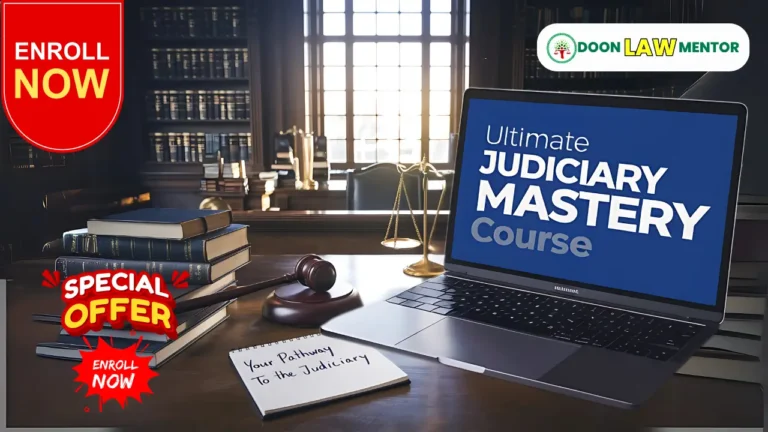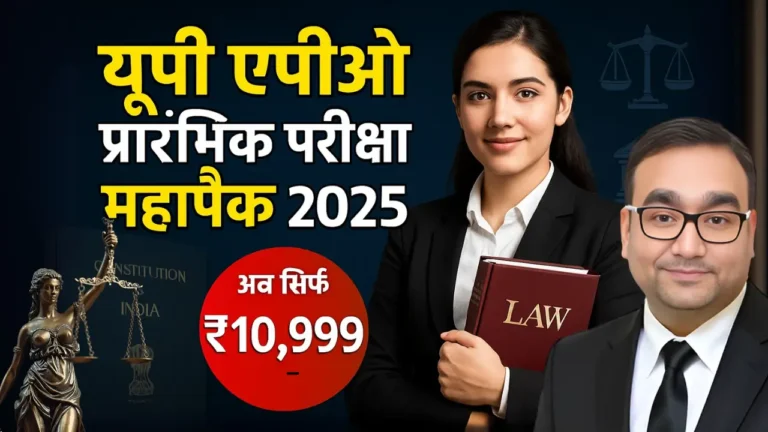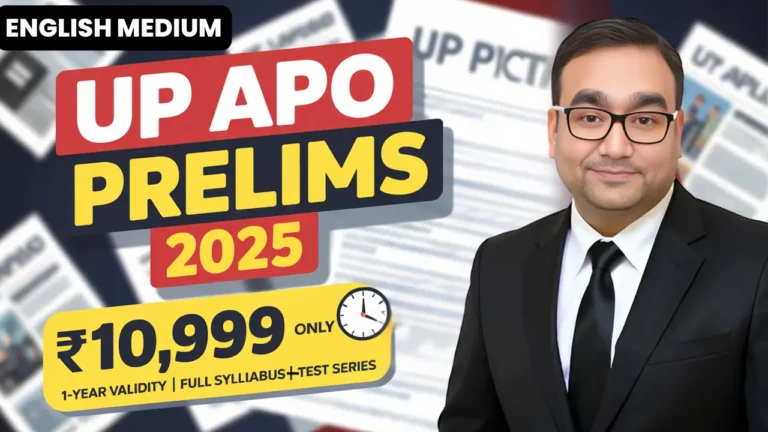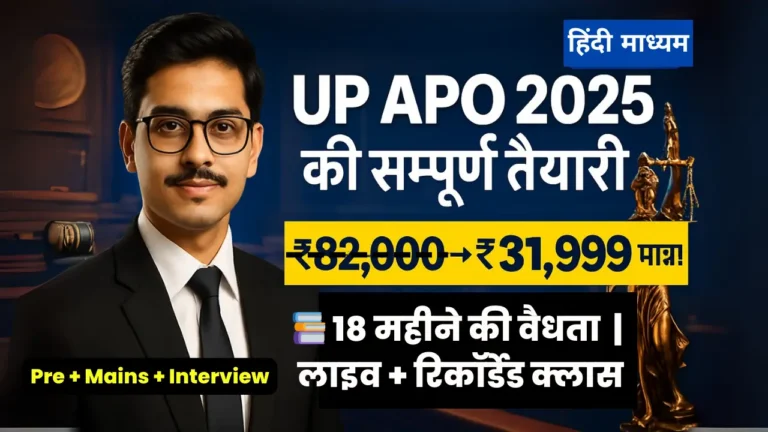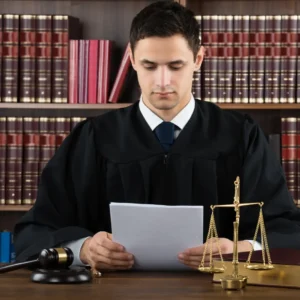Explore the key takeaways from the Ayodhya Verdict 2019, analyzing its legal and social implications. This guide covers the Supreme Court’s ruling, its impact on Indian law, and its societal consequences for law students and judiciary aspirants.
Table of Contents
Introduction to the Ayodhya Verdict
The Ayodhya Verdict, delivered by the Supreme Court of India on November 9, 2019, marked the resolution of a decades-long dispute over a 2.77-acre plot in Ayodhya, Uttar Pradesh, claimed by Hindus as the birthplace of Lord Ram and by Muslims as the site of the Babri Masjid. The unanimous ruling by a five-judge bench, headed by Chief Justice Ranjan Gogoi, awarded the disputed land to a government trust for constructing a Ram temple and allocated an alternative 5-acre plot for a mosque. This landmark judgment, second only to Kesavananda Bharati v. State of Kerala (1973) in significance, has profound legal and social implications. For law students and judiciary aspirants preparing for judiciary interview 2025, understanding the key takeaways from the Ayodhya Verdict is essential for tackling questions on constitutional law, secularism, and socio-legal issues. This article analyzes the verdict’s legal foundations, its societal impact, and its relevance to judicial preparation, with insights from platforms like Doon Law Mentor.
Legal Takeaways from the Ayodhya Verdict
The Ayodhya Verdict addressed complex issues of title, evidence, and constitutional principles, shaping India’s legal landscape. Below are the key legal takeaways:
1. Title Awarded to Ram Lalla as a Juristic Person
The Supreme Court recognized Ram Lalla Virajman (the deity Lord Ram) as a juristic person, capable of holding property rights. The court ruled that the disputed 2.77-acre land be handed over to a trust, formed under the Acquisition of Certain Area at Ayodhya Act, 1993, for constructing a Ram temple. This decision was based on evidence of continuous Hindu worship at the site, particularly in the outer courtyard, as opposed to inconsistent Muslim possession before 1857. The court invoked Article 142 to ensure complete justice, highlighting its discretionary powers.
Read More: Ace Judiciary Interview Preparation 2025 with Expert Video Lecture Tips
2. Alternative Land for Mosque
To remedy the illegal demolition of the Babri Masjid in 1992 and the desecration in 1949, the court directed the Central or Uttar Pradesh government to allocate 5 acres of land in a prominent location in Ayodhya to the Uttar Pradesh Sunni Central Waqf Board for a mosque. This balanced approach aimed to address the Muslim community’s loss while prioritizing the Hindu claim based on possession evidence.
3. Rejection of the Allahabad High Court’s 2010 Verdict
The Supreme Court overturned the Allahabad High Court’s 2010 decision, which had divided the disputed land among Ram Lalla, the Sunni Waqf Board, and Nirmohi Akhara. The court deemed the trifurcation “legally unsustainable” and contrary to settled principles, as it resembled a partition suit rather than a title dispute resolution. This clarified the judiciary’s role in adjudicating title based on evidence, not compromise.
4. Archaeological Evidence and Limitations
The court relied on the Archaeological Survey of India (ASI) report, which indicated a non-Islamic structure beneath the Babri Masjid, supporting Hindu claims of prior worship. However, it clarified that the ASI report did not conclusively prove a temple was demolished to build the mosque, emphasizing that title decisions must rest on legal principles, not archaeological findings alone.
5. Condemnation of Illegal Acts
The verdict explicitly condemned the 1949 desecration (placement of idols in the mosque) and the 1992 demolition of the Babri Masjid as “egregious violations of the rule of law.” By invoking Article 142, the court sought to rectify these wrongs through the allocation of alternative land, reinforcing the judiciary’s commitment to justice over majoritarian sentiments.
6. Places of Worship Act and Secularism
The verdict referenced the Places of Worship (Special Provisions) Act, 1991, which prohibits changing the religious character of places of worship as of August 15, 1947, except for Ayodhya. Justice Rohinton Nariman later emphasized that this aspect of the judgment is a “silver lining,” aimed at preventing future disputes over religious sites. This underscores the court’s effort to uphold secularism, though critics argue the verdict favored faith over facts.
10 Essential Tips for Judiciary Interview for First-Time Aspirants 2025
Social Implications of the Ayodhya Verdict
The Ayodhya Verdict had far-reaching social consequences, influencing communal relations, political discourse, and societal harmony. Below are the key social implications:
1. Promotion of Communal Harmony
The verdict was widely accepted across communities, with both Hindu and Muslim leaders urging peace. Prime Minister Narendra Modi likened it to the fall of the Berlin Wall, calling for unity and harmony. Extensive security measures, including Section 144 CrPC and social media monitoring, prevented violence, reflecting societal maturity in accepting the ruling.
2. Mixed Reactions from Muslim Communities
While some Muslim leaders, like Zufar Faruqi of the Sunni Waqf Board, accepted the verdict, others, including the All India Muslim Personal Law Board and Asaduddin Owaisi, criticized it as a “victory of faith over facts.” The offer of 5 acres was seen by some as charity rather than justice, raising concerns about minority rights in a Hindu-majority nation.
3. Emboldenment of Hindu Right-Wing Groups
The verdict was perceived as a victory for Hindu nationalist groups like the Vishva Hindu Parishad (VHP) and Bharatiya Janata Party (BJP), potentially emboldening campaigns to reclaim other disputed sites. Critics, including Justice Nariman, warned that the verdict’s reliance on faith could weaken secularism, fueling further religious disputes.
4. Reinforcement of Majoritarian Sentiments
The decision heightened fears among India’s 195 million Muslims of being marginalized, especially under a BJP-led government. The verdict’s reliance on Hindu worship practices over Muslim possession raised questions about constitutional fairness, with some arguing it reflected majoritarian influence rather than strict legal reasoning.
5. Closure to a Long-Standing Dispute
By resolving a century-old conflict, the verdict provided closure, allowing society to focus on pressing issues like economic development. The establishment of the Shri Ram Janmabhoomi Teerth Kshetra trust and the Ram temple’s consecration on January 22, 2024, marked a cultural milestone, while the alternative mosque site aimed to foster reconciliation.
Relevance for Judiciary Interview 2025
For judiciary aspirants preparing for judiciary interview 2025, the Ayodhya Verdict is a critical topic for state-specific law questions, especially in Uttar Pradesh, and for constitutional law discussions. Interviewers may ask:
- “Analyze the legal basis of the Ayodhya Verdict.”
- “How does the verdict balance secularism and faith?”
- “Discuss the role of Article 142 in the Ayodhya ruling.”
Aspirants should:
- Study the judgment’s key provisions, such as the juristic personality of Ram Lalla and the use of Article 142.
- Understand state-specific implications, particularly for Uttar Pradesh, where the UP Revenue Code, 2006 may intersect with land allocation issues.
- Cite cases like Hinch Lal Tiwari v. Kamala Devi (2001) for land disputes in Uttar Pradesh (Citation: AIR 2001 SC 3215).
- Use the IRAC method to structure answers, as taught in Doon Law Mentor courses.
Case Study: Answering a Judiciary Interview Question
Consider the question: “How did the Supreme Court balance justice in the Ayodhya Verdict?” Using the IRAC method:
- Issue: How did the court ensure justice for both communities in the Ayodhya Verdict?
- Rule: The court invoked Article 142 to award the disputed land to a trust for a Ram temple and allocated 5 acres for a mosque, citing evidence of Hindu worship and the illegal 1992 demolition.
- Application: The court recognized Ram Lalla as a juristic person, supported by ASI evidence and Hindu possession, while addressing Muslim dispossession through alternative land allocation.
- Conclusion: The verdict balanced justice by resolving the title dispute and promoting communal harmony, though critics argue it prioritized faith.
Video lectures from Judiciary Gold can guide aspirants in crafting such responses for judiciary interview 2025.
Table: Key Legal and Social Takeaways from the Ayodhya Verdict
| Aspect | Legal Takeaway | Social Implication |
|---|---|---|
| Title Dispute | Awarded to Ram Lalla as a juristic person | Provided closure to a century-old conflict |
| Alternative Land | 5 acres for a mosque under Article 142 | Mixed reactions; some Muslims saw it as charity |
| ASI Evidence | Non-Islamic structure beneath mosque, but not conclusive | Emboldened Hindu right-wing groups |
| Secularism | Upheld Places of Worship Act, 1991 | Raised concerns about majoritarian influence |
| Illegal Acts | Condemned 1949 desecration and 1992 demolition | Promoted communal harmony through acceptance |
This table summarizes the key takeaways from the Ayodhya Verdict for quick reference.
Challenges and Criticisms
The verdict faced challenges, including:
- Perceived Bias: Critics, like Asaduddin Owaisi, argued it favored Hindu faith over legal evidence, undermining secularism.
- Article 142 Misuse: The court’s use of discretionary powers was seen as arbitrary, bypassing statutory provisions like the Waqf Act.
- Future Disputes: The ruling’s reliance on faith may encourage claims against other religious sites, as noted by Justice Nariman.
Aspirants should address these criticisms in interviews by acknowledging the verdict’s balance while noting its secular safeguards, such as the Places of Worship Act.
Conclusion and Key Takeaways
The Ayodhya Verdict 2019 is a landmark in Indian jurisprudence, resolving a contentious dispute while raising complex questions about law and society. For judiciary interview 2025, aspirants must understand its legal foundations and social implications to answer state-specific and constitutional law questions effectively. Key takeaways include:
- The court recognized Ram Lalla as a juristic person, awarding the disputed land for a Ram temple.
- Alternative land allocation for a mosque aimed to remedy past wrongs.
- The verdict promoted communal harmony but raised concerns about secularism.
- Aspirants should study the verdict’s interplay with Article 142 and the Places of Worship Act for interviews.
Enroll in Doon Law Mentor’s video lectures and mock interview sessions to master state-specific law questions in judiciary interview 2025, including those on the Ayodhya Verdict. Start preparing today to secure your judicial career!
FAQs
1. What are the key legal takeaways from the Ayodhya Verdict?
The verdict awarded the disputed land to Ram Lalla, rejected the Allahabad High Court’s trifurcation, and used Article 142 to allocate 5 acres for a mosque, condemning illegal acts like the 1992 demolition.
2. How did the Ayodhya Verdict impact Indian society?
It promoted communal harmony, provided closure, but raised concerns about majoritarian influence and minority rights, with mixed reactions from Muslim communities.
3. Why is the Ayodhya Verdict relevant for judiciary interview 2025?
It’s a key topic for state-specific law questions, especially in Uttar Pradesh, and tests understanding of constitutional law, secularism, and Article 142.
4. How can I prepare for Ayodhya Verdict questions in interviews?
Study the judgment, Bare Acts, and cases like Hinch Lal Tiwari. Use video lectures from Doon Law Mentor and practice with IRAC.
5. What role did Article 142 play in the Ayodhya Verdict?
Article 142 enabled the court to award alternative land to the Sunni Waqf Board, ensuring complete justice despite statutory limitations.
6. How did the verdict address secularism?
It upheld the Places of Worship Act, 1991, but critics argue it prioritized Hindu faith, raising concerns about secularism’s application.
Tags: Ayodhya Verdict 2019, legal implications, social implications, Ram temple, Babri Masjid, judiciary interview 2025, state-specific law questions
Hashtags: #AyodhyaVerdict #JudiciaryInterview2025 #RamTemple #BabriMasjid #LegalImplications #DoonLawMentor

